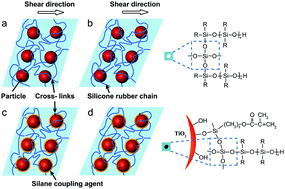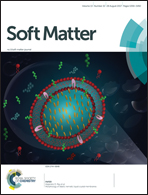Damping mechanism and theoretical model of electrorheological elastomers
Abstract
As a smart soft material, electrorheological elastomers (EREs) present tunable damping capacity and adjustable dynamic moduli on applying an electric field. Most of the previous studies focused on their dynamic moduli, while the damping performance has been neglected. In this study, the damping capacity of two kinds of EREs containing bare TiO2 and silane coupling agent-modified TiO2 particles were tested and compared as a function of strain amplitude. The results indicate that the modified TiO2 particle filled EREs present lower damping capacity when the strain amplitude exceeds 10%, indicating that the interfacial friction between the modified TiO2 particles and the matrix is decreased due to the stronger interface strength. A theoretical model is developed to describe the damping behaviour of the EREs, which is divided into the intrinsic damping, the interface damping and the electric field induced damping. The experimental results are well matched with the damping curves given by this model under various electric field strengths, and the difference between the damping capacity of the ERE containing bare TiO2 particles and the one containing modified TiO2 particles can be mainly ascribed to the effect of weakly and strongly bonded interface damping.



 Please wait while we load your content...
Please wait while we load your content...